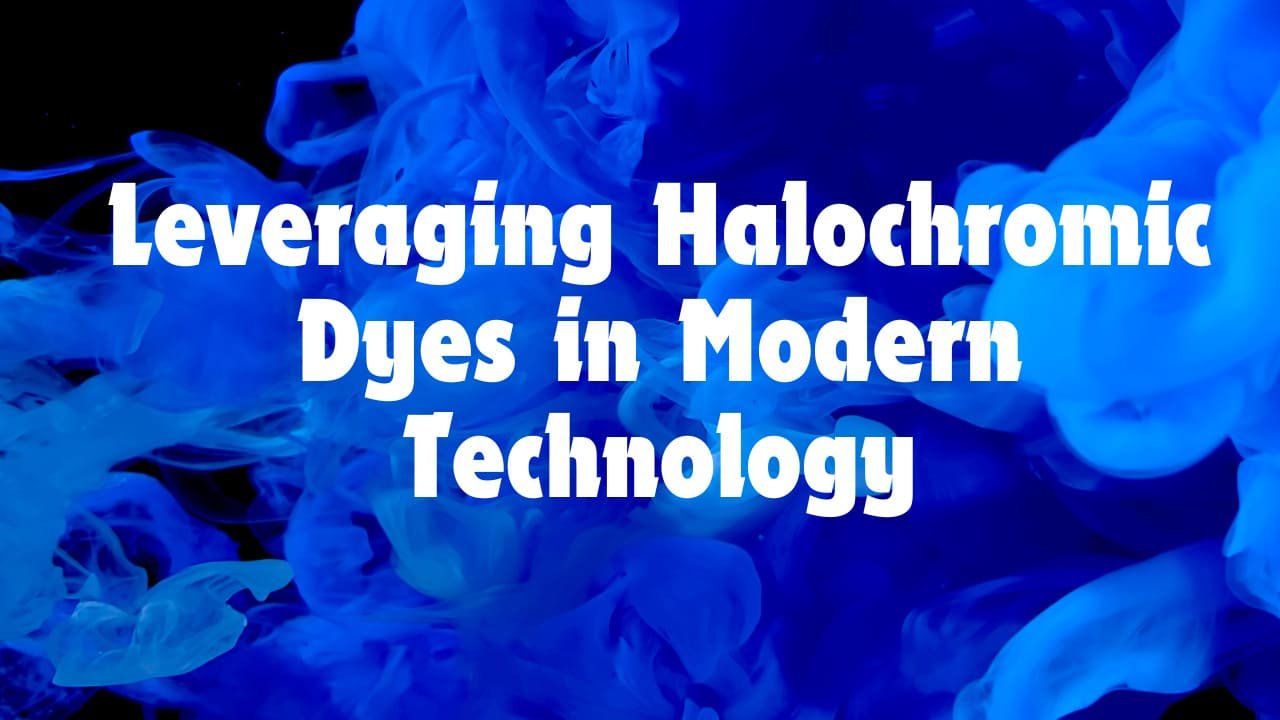Halochromic dyes are a class of compounds that change color in response to changes in pH levels. This property has made them a significant element in modern technology, especially for developing smart systems that can indicate pH variations in real time. These dyes, including the advanced solutions provided by GSP Chem, are being used in diverse fields ranging from healthcare and environmental monitoring to textiles and industrial applications.
What are Halochromic Dyes?
Halochromic dyes, also known as halochromic chemicals, possess the ability to change their color when exposed to different pH levels. The chemical structure of these dyes allows them to react with acidic or basic environments, making them ideal for applications where monitoring pH is essential. When the pH value of the environment around these dyes changes, the alteration in their structure causes a visible shift in their color, which serves as an indicator.
Applications of Halochromic Dyes in Modern Technology
1. pH Sensors
One of the most prominent uses of halochromic dyes is in the development of pH sensors. These sensors have broad applications across various industries, particularly in chemical and environmental monitoring. For instance, in water treatment plants, these dyes help detect pH levels, providing a visual alert for any hazardous conditions. Similarly, in chemical manufacturing industries, such as those serviced by GSP Chem, these dyes can monitor the acidity or alkalinity of solutions in real time, ensuring that the desired chemical processes occur under the correct pH conditions.
2. Smart Textiles
Halochromic dyes are also being integrated into the textile industry to produce smart fabrics. These fabrics are capable of changing color based on the environment’s pH, moisture levels, or other chemical stimuli. Smart textiles embedded with halochromic chemicals have the potential to revolutionize fashion, sportswear, and medical textiles by offering dynamic properties. For example, athletic wear could use halochromic dyes to monitor sweat levels, while medical textiles could alert caregivers to potential infections in wounds by changing color in response to pH changes.
3. Biomedical Applications
In the medical field, halochromic dyes are proving useful in developing diagnostic tools. Since many diseases alter the pH balance in certain tissues, halochromic chemicals can be used to detect changes in pH, which may indicate illness. For instance, certain types of cancers can cause pH changes, and halochromic dyes could be instrumental in early detection. Additionally, GSP Chem, a leading supplier of these dyes, provides solutions for labs and clinics looking to implement efficient and cost-effective diagnostic technologies.
4. Food and Beverage Industry
The food and beverage industry also relies on halochromic dyes for quality control and food safety. These dyes can monitor the pH of food products during manufacturing and storage, ensuring the preservation of food quality. Color-changing sensors made with halochromic dyes can also be integrated into packaging materials, offering real-time feedback on the condition of the food inside. For example, a package might change color if the product inside becomes unsafe to eat due to pH fluctuations.
5. Environmental Monitoring
Environmental monitoring is another critical area where halochromic dyes have found significant applications. The capability to detect pH levels in air, water, and soil makes these dyes ideal for tracking pollution and environmental changes. GSP Chem plays a pivotal role in supplying halochromic dyes that are being used in sensors to monitor ocean acidification, soil health, and air quality. As environmental regulations tighten globally, the use of such smart indicators is increasingly valuable for industries striving to meet sustainability goals.
Innovations in Halochromic Dye Technology
With rapid technological advancements, research into halochromic chemicals is also evolving. Scientists are exploring how to enhance the sensitivity, stability, and color range of these dyes to broaden their industrial applications. Recent innovations include the development of hybrid systems where halochromic dyes are combined with other functional materials to create multi-responsive systems that change not only in response to pH but also to other environmental stimuli like temperature or light.
GSP Chem, as a key player in the industry, is actively investing in R&D to produce high-quality halochromic dyes that are not only durable but also environmentally friendly. The integration of these dyes into various sectors is likely to see further expansion as smart systems and IoT technology become more widespread.
Key Advantages of Halochromic Dyes
Real-time feedback: Halochromic dyes provide immediate color changes in response to pH shifts, making them excellent for monitoring systems.
- Versatility – These dyes can be incorporated into a wide range of materials, including fabrics, sensors, and packaging.
- Cost-Effective – The use of halochromic chemicals is an economical option for pH monitoring as they provide simple and visual cues, reducing the need for complex machinery.
- Non-invasive diagnostic tool – In the medical field, these dyes offer a non-invasive method for monitoring physiological changes in real time.
Challenges and Future Outlook
Despite their many benefits, there are some challenges to overcome when using halochromic chemicals. For example, the accuracy of the color change can be affected by factors such as temperature, humidity, and exposure to light, which may interfere with their precision. However, ongoing research and technological advancements are working to mitigate these issues.
In the future, GSP Chem envisions expanded applications for halochromic dyes, particularly in the field of smart cities and personal health monitoring devices. These dyes have the potential to integrate seamlessly into modern technology, offering real-time insights and helping industries stay on top of environmental changes, product quality, and safety standards.
Conclusion
Halochromic dyes are proving to be a game-changer in modern technology. Their ability to provide real-time pH monitoring across various industries, from medical diagnostics to environmental monitoring, makes them indispensable. As research progresses, we can expect to see even more advanced applications and improved efficiency of these innovative materials. With GSP Chem as a trusted supplier of halochromic chemicals, industries can leverage these powerful tools to stay ahead in the ever-evolving technological landscape.








